Related Research Articles

James I was King of Scots from 1406 until his assassination in 1437. The youngest of three sons, he was born in Dunfermline Abbey to King Robert III and Annabella Drummond. His older brother David, Duke of Rothesay, died under suspicious circumstances during detention by their uncle, Robert, Duke of Albany. James' other brother, Robert, died young. Fears surrounding James's safety grew through the winter of 1405/06 and plans were made to send him to France. In February 1406, James was forced to take refuge in the castle of the Bass Rock in the Firth of Forth after his escort was attacked by supporters of Archibald, 4th Earl of Douglas. He remained at the castle until mid-March, when he boarded a vessel bound for France. On 22 March, an English vessel captured the ship and delivered the prince to Henry IV of England. The ailing Robert III died on 4 April and the 11-year-old James, now the uncrowned King of Scots, would not regain his freedom for another eighteen years.
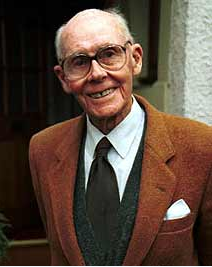
Nigel Tranter OBE was a writer of a wide range of books on castles, particularly on themes of architecture and history. He also specialised in deeply researched historical novels that cover centuries of Scottish history.
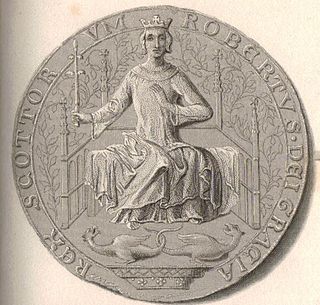
Robert II was King of Scots from 1371 to his death in 1390. The son of Walter Stewart, 6th High Steward of Scotland, and Marjorie, daughter of King Robert the Bruce, he was the first monarch of the House of Stewart. Upon the death of his uncle David II, Robert succeeded to the throne.
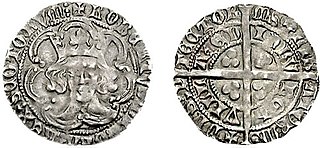
Robert III, born John Stewart, was King of Scots from 1390 to his death in 1406. He was also High Steward of Scotland from 1371 to 1390 and held the titles of Earl of Atholl (1367–1390) and Earl of Carrick (1368–1390) before ascending the throne at about the age of 53 years. He was the eldest son of King Robert II and Elizabeth Mure and was legitimized by the second marriage of his parents and by papal dispensation in 1349.
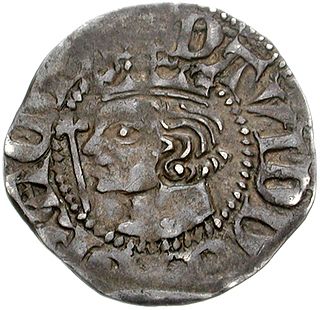
David II was King of Scotland from 1329 until his death in 1371. Upon the death of his father, Robert the Bruce, David succeeded to the throne at the age of five, and was crowned at Scone in November 1331, becoming the first Scottish monarch to be anointed at their coronation. During his childhood, David was governed by a series of guardians, and Edward III of England sought to take advantage of David's minority by supporting an invasion of Scotland by Edward Balliol, beginning the Second War of Scottish Independence. Following the English victory at the Battle of Halidon Hill in 1333, King David, Queen Joan and the rump of his government were evacuated to France, where he remained in exile until it was safe for him to return to Scotland in 1341.

James III was King of Scots from 1460 until his death at the Battle of Sauchieburn in 1488. He inherited the throne as a child following the death of his father, King James II, at the siege of Roxburgh Castle. James III's reign began with a minority that lasted almost a decade, during which Scotland was governed by a series of regents and factions who struggled for possession of the young king, before his personal rule began in 1469.
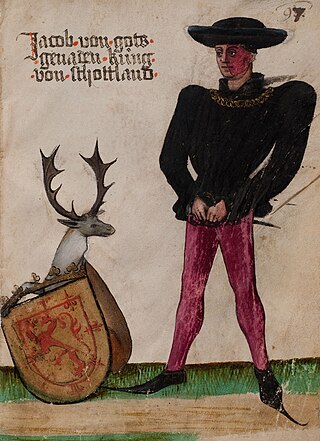
James II was King of Scots from 1437 until his death in 1460. The eldest surviving son of James I of Scotland, he succeeded to the Scottish throne at the age of six, following the assassination of his father. The first Scottish monarch not to be crowned at Scone, James II's coronation took place at Holyrood Abbey in March 1437. After a reign characterised by struggles to maintain control of his kingdom, he was killed by an exploding cannon at Roxburgh Castle in 1460.

The House of Stuart, originally spelled Stewart, was a royal house of Scotland, England, Ireland and later Great Britain. The family name comes from the office of High Steward of Scotland, which had been held by the family progenitor Walter fitz Alan. The name Stewart and variations had become established as a family name by the time of his grandson Walter Stewart. The first monarch of the Stewart line was Robert II, whose male-line descendants were kings and queens in Scotland from 1371, and of England, Ireland and Great Britain from 1603, until 1714. Mary, Queen of Scots, was brought up in France where she adopted the French spelling of the name Stuart.
There are currently two earldoms of Mar in the Peerage of Scotland, and the title has been created seven times. The first creation of the earldom is currently held by Margaret of Mar, 31st Countess of Mar, who is also clan chief of Clan Mar. The seventh creation is currently held by James Erskine, 14th Earl of Mar and 16th Earl of Kellie, who is also clan chief of Clan Erskine.

Lord Gray is a title in the Peerage of Scotland. The Barony of Gray was created circa July 1445 for the Scottish diplomat and politician Sir Andrew Gray. The first Lord Gray was a hostage in England for the good conduct of James I of Scotland from 1424 to 1427, and was one of the knights who accompanied Lady Margaret Stewart to France for her marriage to Louis XI of France in 1436.

Earl of Carrick is the title applied to the ruler of Carrick, subsequently part of the Peerage of Scotland. The position came to be strongly associated with the Scottish crown when Robert the Bruce, who had inherited it from his maternal kin, became King of Scots in the early 14th century. Since the 15th century, the title of Earl of Carrick has automatically been held by the heir apparent to the throne, thus the current holder of the title is Prince William, Duke of Rothesay.
Sir James Douglas, 2nd Earl of Douglas and Mar was an influential and powerful magnate in the Kingdom of Scotland.

Threave Castle is situated on an island in the River Dee, 2.5 kilometres (1.6 mi) west of Castle Douglas in the historical county of Kirkcudbrightshire in the Dumfries and Galloway region of Scotland.

Archibald Douglas, Earl of Douglas and Wigtown, Lord of Galloway, Douglas and Bothwell, called Archibald the Grim or Black Archibald, was a late medieval Scottish nobleman. Archibald was the bastard son of Sir James "the Black" Douglas, Robert I's trusted lieutenant, and an unknown mother. A first cousin of William 1st Earl of Douglas, he inherited the earldom of Douglas and its entailed estates as the third earl following the death without legitimate issue of James 2nd Earl of Douglas at the Battle of Otterburn.
William Douglas, 8th Earl of Douglas, 2nd Earl of Avondale was a late Medieval Scottish nobleman, Lord of Galloway, and Lord of the Regality of Lauderdale, and the most powerful magnate in Southern Scotland. He was killed by James II of Scotland.

Alexander Stewart was a Scottish nobleman, Earl of Mar from 1404. He acquired the earldom through marriage to the hereditary countess, and successfully ruled the northern part of Scotland.

Clan Mar is a Scottish clan of the Scottish Lowlands. It is also officially known as the Tribe of Mar. The chiefs of the Clan Mar were the original Earls of Mar, although this title later went via an heiress to the Douglases in the late fourteenth century, and then to the Stewarts before going to the Erskines. The current chief of Clan Mar is Margaret of Mar, Countess.

Isabel Douglas, Countess of Mar was Countess of Mar.

Bonkyll Castle was a medieval fortress situated in the historic Scottish county of Berwickshire, from 1973 the Scottish Borders. It is situated 4 miles north of Duns and 4 miles south of Grantshouse. Few traces survive and the site is protected as a scheduled monument. It was the seat of a junior branch of the Stewart family, known as "Stewart of Bonkyl", from which was descended in another junior branch "Stewart of Darnley", the paternal family of King James VI & I of Scotland and England.
James Stewart, 1st Lord Doune (1529-1590) was a Scottish landowner.